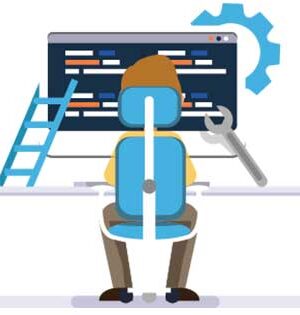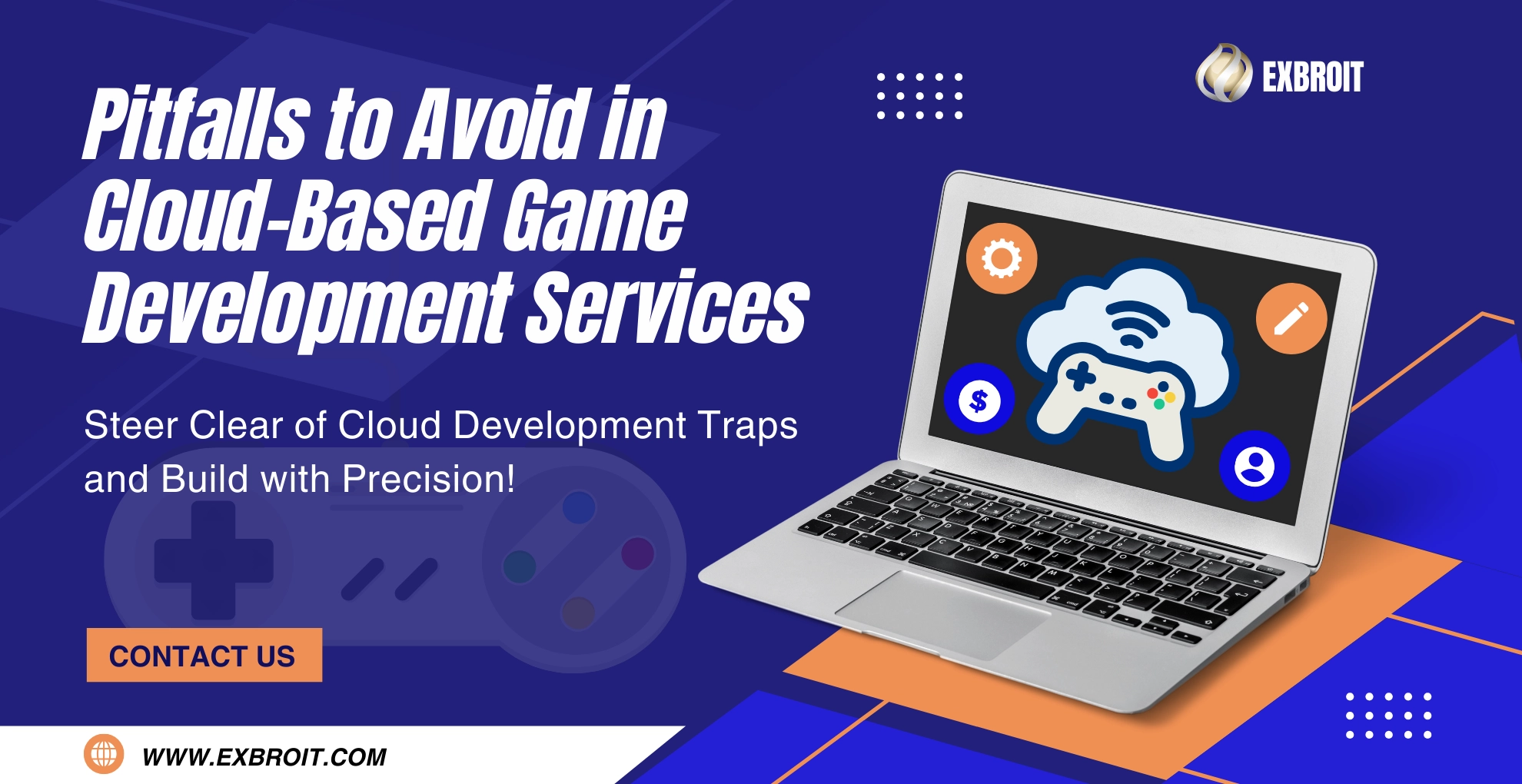The gaming industry is undergoing a transformation powered by technology, with cloud-based game development services leading the charge. By enabling developers to work collaboratively, scale effortlessly, and deploy globally, the cloud offers immense opportunities. However, like any innovation, it comes with its own challenges. Avoiding certain pitfalls can make all the difference between a successful game launch and a costly failure.
“The cloud’s scalability empowers game developers to adapt to user demand effortlessly, ensuring seamless gaming experiences for players worldwide.”
– Satya Nadella
In this guide, we’ll delve into the five critical pitfalls you must sidestep in cloud-based game development services. We’ll also debunk common myths and share real-life case studies to provide actionable insights.
Understanding Cloud-Based Game Development Services:
Before diving into the pitfalls, let’s clarify what cloud-based game development entails. These services leverage cloud infrastructure to allow developers to create, test, and deploy games. By eliminating the need for on-premises hardware and enabling seamless global access, the cloud has redefined the way games are built and played.
Key Advantages of Cloud-Based Game Development Services:
- Cost Efficiency: Reduces upfront hardware costs.
- Scalability: Adjust resources on demand to handle player influx.
- Collaboration: Enables teams worldwide to work in real-time.
- Faster Deployment: Speeds up the time-to-market.
Despite these advantages, failing to navigate the common pitfalls can lead to financial and operational setbacks.
Pitfall #1: Underestimating Security Risks
One of the most significant risks in cloud-based game development is data security. With sensitive user information and intellectual property stored in the cloud, developers must prioritize robust cybersecurity measures.
Why This Matters:
Gamers expect their personal data to remain secure. A single breach can tarnish your reputation and result in hefty penalties.
How to Avoid It:
- Choose Reputable Cloud Providers: Opt for platforms like AWS, Microsoft Azure, or Google Cloud that offer advanced security features.
- Encrypt Sensitive Data: Ensure all data at rest and in transit is encrypted.
- Conduct Regular Security Audits: Regularly test your systems for vulnerabilities.
Pitfall #2: Overlooking Latency Issues
Latency is a game-changer in cloud-based development. Slow response times can frustrate players, leading to a poor gaming experience and negative reviews.
Why This Matters:
Latency directly impacts user experience, particularly in multiplayer and real-time games.
How to Avoid It:
- Optimize Server Locations: Host servers closer to your target audience to reduce lag.
- Invest in Edge Computing: Use edge servers to process data locally for faster responses.
- Monitor Performance Metrics: Continuously measure and fine-tune latency metrics.
Pitfall #3: Poor Resource Planning
Scalability is one of the biggest advantages of cloud-based game development services, but improper resource planning can lead to unexpected costs or resource shortages.
Why This Matters:
Over-provisioning wastes money, while under-provisioning can lead to server crashes during peak demand.
How to Avoid It:
- Leverage Auto-Scaling Features: Use tools that adjust resources based on demand.
- Monitor Usage Patterns: Regularly analyze player data to predict resource needs.
- Set Budget Alerts: Avoid surprises by setting financial thresholds for cloud usage.
Pitfall #4: Ignoring Team Collaboration Challenges
Cloud services enable global collaboration, but without clear workflows, miscommunication can hinder progress.
“Adopting the cloud isn’t just about cutting costs; it’s about rethinking your strategy to overcome new operational challenges.”
– Thomas Kurian, CEO of Google Cloud
Why This Matters:
Disjointed workflows can lead to missed deadlines and a lack of cohesion in the final product.
How to Avoid It:
- Use Collaboration Tools: Platforms like Slack, Trello, and Jira streamline communication.
- Define Clear Roles: Assign specific tasks and responsibilities to team members.
- Regular Check-ins: Schedule weekly meetings to track progress and resolve issues.
Pitfall #5: Believing Common Myths About Cloud-Based Game Development
Many developers fall prey to misconceptions about cloud services, leading to unrealistic expectations.
Myth #1: Cloud Is Always Cheaper
While the cloud eliminates upfront costs, improper management can lead to ballooning expenses.
Reality: Careful budgeting and monitoring are essential to avoid overspending.
Myth #2: The Cloud Handles Everything Automatically
Some believe cloud platforms manage all operational aspects, but manual intervention is often required.
Reality: Developers must optimize workflows and monitor performance actively.
Myth #3: Any Game Can Be Moved to the Cloud
Not all games are suited for cloud deployment due to technical constraints or player expectations.
Reality: Evaluate whether your game’s mechanics align with cloud-based models.
Best Practices for Cloud-Based Game Development:
To maximize the potential of cloud-based game development services, consider these best practices:
- Invest in Staff Training: Ensure your team understands the nuances of cloud technologies.
- Regularly Update Software: Stay on top of updates to improve security and performance.
- Leverage Analytics: Use cloud analytics to gain insights into player behavior and refine gameplay.
- Adopt a Multi-Cloud Strategy: Avoid vendor lock-in by using multiple cloud providers.

Case Studies For Cloud-based Game Development Services:
I. Fortnite and AWS: Scalable Success
Summary: Epic Games, the creators of Fortnite, leveraged Amazon Web Services (AWS) to support the rapid growth of the game, which reached over 200 million players globally. AWS provided a scalable infrastructure capable of handling massive surges in player activity, especially during high-demand events. Epic utilized AWS services for its backend systems, analytics, and global server fleet. This setup allowed Fortnite to maintain high performance, even during peaks exceeding 30 times the usual load. Additionally, the integration of AWS’s machine learning tools enabled Epic to enhance player experience and predict demand effectively.
II. Unity and Cloud Build: Speed and Collaboration
Summary: Unity Technologies implemented its “Cloud Build” feature to streamline the game development process. By allowing developers to automate builds and collaborate in real time across distributed teams, Unity drastically reduced development times. This approach benefited developers and allowed faster iteration cycles, which are crucial for releasing updates and new features in live-service games. While specific metrics were not cited in the sources, Unity’s approach has been highlighted as an efficient method for managing large-scale game development in the cloud.
Facts And Sources:
Epic Games used AWS’s scalable cloud infrastructure to support Fortnite’s explosive growth. AWS enabled the game to handle millions of concurrent players by providing auto-scaling server capacity and robust backend solutions. Epic also utilized AWS’s machine learning tools and analytics to enhance player experience and optimize resource usage.
- Fortnite has supported over 200 million players globally, with peaks in activity reaching up to 30 times normal levels during special in-game events.
- AWS’s tools allowed Epic to predict player demand and manage server loads effectively without compromising performance.
General FAQs
What are the biggest security risks in cloud-based game development services?
Security risks include data breaches, unauthorized access, and Distributed Denial of Service (DDoS) attacks. These can compromise sensitive user data and intellectual property. To mitigate these risks, use robust encryption, adopt multi-factor authentication, and ensure regular security audits with your cloud provider. Partnering with reputable platforms like AWS or Microsoft Azure, known for their strong security frameworks, can further safeguard your data.
How can I avoid high latency in cloud-based games?
Latency issues can be reduced by strategically placing servers closer to your target audience, leveraging edge computing, and optimizing your game’s code for faster data processing. Monitoring network performance and employing tools for real-time diagnostics also help maintain low latency. Selecting a cloud provider with a global server network is critical for delivering a seamless gaming experience.
What is the most common myth about cloud-based game development?
One common myth is that cloud-based solutions automatically handle all scalability and operational needs. While the cloud simplifies many tasks, active management is required to optimize costs, monitor performance, and scale resources effectively. Developers need to understand and utilize the cloud’s full suite of tools to maximize its potential.
How can poor resource planning affect my game development project?
Without proper planning, you risk over-provisioning (wasting budget on unused resources) or under-provisioning (causing server outages during peak activity). This can lead to delayed launches, poor player experiences, or excessive costs. Avoid this by using auto-scaling features, analyzing usage patterns, and setting budget alerts.
What collaboration challenges arise in cloud-based game development?
Teams working remotely may face miscommunication, version control issues, or unclear responsibilities. These challenges can delay development and compromise product quality. To address this, adopt collaboration tools like Trello or Jira, clearly define roles, and schedule regular team check-ins. Using version control software like GitHub or Bitbucket also ensures seamless integration across distributed teams.
Are all types of games suitable for cloud-based development?
Not every game type is ideal for the cloud. Games with low bandwidth requirements or highly localized player bases might not benefit as much from cloud infrastructure. On the other hand, multiplayer games and titles requiring frequent updates or global distribution are well-suited for cloud deployment. Conduct a feasibility study to determine alignment with your game’s needs.
How do I ensure cost efficiency with cloud-based game development?
To manage costs, utilize tools like budget trackers, set limits on resource usage, and regularly review your expenses. Auto-scaling ensures you pay only for the resources you need, while multi-cloud strategies prevent vendor lock-in and allow you to choose cost-effective solutions for specific tasks.
Final Thoughts: Pitfalls To Avoid in Cloud-Based Game Development Services
Cloud-based game development services open doors to unparalleled creativity and efficiency. However, success requires a proactive approach to avoid common pitfalls. By addressing security, latency, resource planning, and team collaboration, you can create games that captivate players and drive business growth.
“The ability to develop, test, and launch games collaboratively in real-time is revolutionizing the gaming industry.”
– Tim Sweeney
Partner with a trusted cloud provider, invest in the right tools, and empower your team to deliver exceptional gaming experiences. Ready to transform your gaming projects? Embrace the cloud and elevate your development journey!










